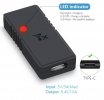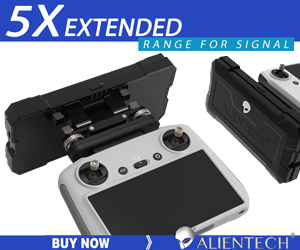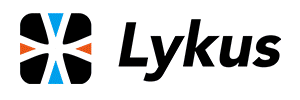You are using an out of date browser. It may not display this or other websites correctly.
You should upgrade or use an alternative browser.
You should upgrade or use an alternative browser.
Charge times?
- Thread starter SecureHttp
- Start date
chickentarts
Active Member
THE CYBORG
Well-Known Member
I don’t know the answer but generally slower charging is better for your battery, fast charging can have an effect on the overall life expectancy of a battery.
I would assume the charger that comes with your Mini is the optimum power without degrading the battery.
Saying that I have a charger for my M2P that charges 4 batteries simultaneously & it is rated 4.5A where as the standard charger is only 2A
I would assume the charger that comes with your Mini is the optimum power without degrading the battery.
Saying that I have a charger for my M2P that charges 4 batteries simultaneously & it is rated 4.5A where as the standard charger is only 2A
- Joined
- Oct 17, 2020
- Messages
- 1,213
- Reactions
- 896
- Age
- 44
- Location
- Grand Rapids, MI
- Site
- karlblessing.com
Well I know they say the 18W (5V/3A) one will charge all 3 in 4 hours. I'm guessing the 3 inputs for the 2-way charger 5V/3A, 9V/3A, 12V/3A are the respective jumps. But 12V/3A is 36W, 9V/3A is 27W, and 5V/3A is 15W.
DJI seems to go cheap when it comes to the MM chargers. You don't even get a charger without the FMC.
So even though DJI provides an 18W charger, the charging circuits in the battery/hub/charger might take advantage of the additional watts.
I need to look into this. I have a couple chargers that put out at least 24W (12v@2A in QC). I say at least because it's a dual port, the other being SmartIO ([email protected])
So even though DJI provides an 18W charger, the charging circuits in the battery/hub/charger might take advantage of the additional watts.
I need to look into this. I have a couple chargers that put out at least 24W (12v@2A in QC). I say at least because it's a dual port, the other being SmartIO ([email protected])
let me know how it goesDJI seems to go cheap when it comes to the MM chargers. You don't even get a charger without the FMC.
So even though DJI provides an 18W charger, the charging circuits in the battery/hub/charger might take advantage of the additional watts.
I need to look into this. I have a couple chargers that put out at least 24W (12v@2A in QC). I say at least because it's a dual port, the other being SmartIO ([email protected])
hiflyer201
Well-Known Member
- Joined
- Sep 27, 2018
- Messages
- 2,739
- Reactions
- 2,166
With the cost of batteries I'm very wary of fast chargers. I rarely fly the same battery twice the same day except that now after blowing thru 3 Mavic Air 1 batteries I'm down to one new battery and it seems to charge much faster than the batteries on the Air 2. There is a big range difference and that's probably the reason but I would be more comfortable with a slower not a faster charge.
Looks like DJI is learning from Apple. Apple now does not include chargers at all. DJI is providing 18W chargers and won't be surprised if they do like Apple in the feature to sell you the premium charger...
Phones should include chargers so as to guarantee compatibility. In the past phone mfrs encouraged using their chargers, particularly when new standards for delivering more power were appearing.
Now if something goes wrong, they can't ask if you used the included charger to rule that out as the cause, since there isn't one.
USB as you probably know is 5v. The typical USB cables can't handle much more than 2A without excess heat or deteriorating over time. Besides, as current goes up, you incur more voltage loss in the cable. To get more watts without excessive current, you have to then increase voltage. So fast charging uses higher voltage.
In most devices, watts consumed goes down as the battery gains charge level, especially past 80%.
I'm sure the MM1 and MM2 batteries can more than handle 24W. For the other Mavic models, the charger is specifically designed for the battery. The circuits in the battery itself mostly controls the charge rate.
Now if something goes wrong, they can't ask if you used the included charger to rule that out as the cause, since there isn't one.
USB as you probably know is 5v. The typical USB cables can't handle much more than 2A without excess heat or deteriorating over time. Besides, as current goes up, you incur more voltage loss in the cable. To get more watts without excessive current, you have to then increase voltage. So fast charging uses higher voltage.
In most devices, watts consumed goes down as the battery gains charge level, especially past 80%.
I'm sure the MM1 and MM2 batteries can more than handle 24W. For the other Mavic models, the charger is specifically designed for the battery. The circuits in the battery itself mostly controls the charge rate.
When a device is capable of QC (quick charge) 2.0 or 3.0 they can handle charging voltage of 5V, 9V, 12V and 3A and above.
Even Samsung makes 45W chargers over USB-C QC3.
Even Samsung makes 45W chargers over USB-C QC3.
Fun fact, Mavic Mini (1st Gen) could charge @ 24W with QC3 12V 2A charger (comes standard with smart controller if you have one). If you hate waiting for charging, get one of the aftermarket chargers YX make usually few months after drone release.
Scoobychief
Well-Known Member
i found that it takes an average of 80 minutes to fully charge 1 battery thats a long time. with the supplied charging cable and plug
TDZHDTV
Well-Known Member
The voltage for MM1 batteries are lower than MM2 batteries so using a charger designed for MM1 will under charge an MM2 battery. An MM1 battery is a different shape and slightly narrower than MM2 so so an MM2 battery won't fit in an MM1 slot anyway.
An MM1 battery could fit an MM2 charging slot but since the MM2 charging voltage is higher, that could be a problem. Since DJI confirmed an MM1 battery could be used in an MM2 AC, and since a Mini AC also acts as a charger, I would think it detects the MM1 battery and lowers max charge voltage. Hopefully the MM2 hub does the same.
If the MM2 battery fits in/on a third party MM1 battery charger, it may undercharge the battery.
An MM1 battery could fit an MM2 charging slot but since the MM2 charging voltage is higher, that could be a problem. Since DJI confirmed an MM1 battery could be used in an MM2 AC, and since a Mini AC also acts as a charger, I would think it detects the MM1 battery and lowers max charge voltage. Hopefully the MM2 hub does the same.
If the MM2 battery fits in/on a third party MM1 battery charger, it may undercharge the battery.
QC standard does not specify a current requirement, only the voltages and how they are negotiated. Devices will vary on what their maximum current draw would be. The point of QC negotiating higher voltages is to keep the current down at higher wattage. High current causes heat and voltage drop in the wiring. That's why 240v is used in North America for high wattage devices like ACs, water heaters, stoves and clothes dryers.When a device is capable of QC (quick charge) 2.0 or 3.0 they can handle charging voltage of 5V, 9V, 12V and 3A and above.
Even Samsung makes 45W chargers over USB-C QC3.
I never say the opposite.QC standard does not specify a current requirement, only the voltages and how they are negotiated. Devices will vary on what their maximum current draw would be. The point of QC negotiating higher voltages is to keep the current down at higher wattage. High current causes heat and voltage drop in the wiring. That's why 240v is used in North America for high wattage devices like ACs, water heaters, stoves and clothes dryers.
Similar threads
- Replies
- 13
- Views
- 1K
- Replies
- 4
- Views
- 1K
- Replies
- 8
- Views
- 642
DJI Drone Deals
New Threads
-
-
-
-
-
3 Mavic 4 Pro - Red Bull X-Alps 2025 Drone Reel
- Started by c.oberschneider
- Replies: 0











